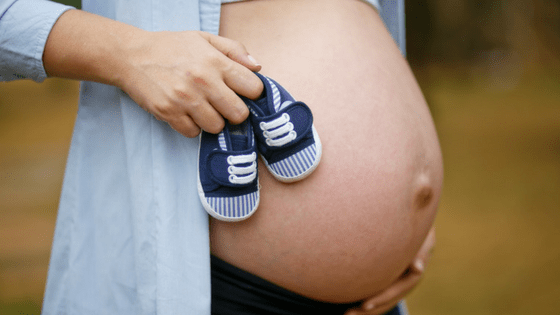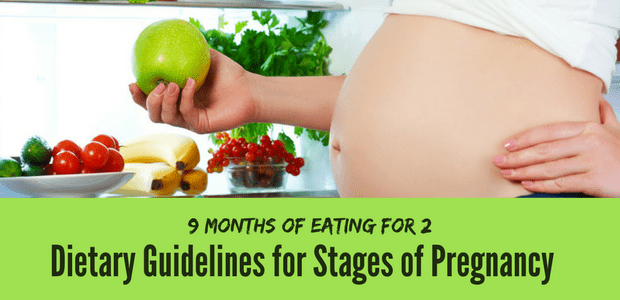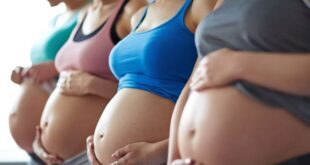No one who hears the expression ‘she’s eating for two’ will need to be appraised of what that means regarding a woman. It of course means she’s pregnant. Along with accommodating that increase in appetite, there’s also a need for eating right given the fact a new life is growing within her body and the relevance of ‘you are what you eat’ starts while you’re still in the womb.
The eating for 2 expression can be misconstrued to mean you double up your food intake. It’s widely understood that your caloric intake should be more than 300 per day. Long story short it’s not a focus on eating significantly more, it’s a focus on eating sufficiently more AND eating smarter, according to Cindy Redding, a prenatal nutrition expert working in conjunction with YesWellness.
The principles of eating a healthy, balanced diet and eating whole, fresh foods rather than processed ones are a given, but there’s actually more specific guidelines for women based on where they are in the duration of their pregnancy.
There are 3 trimesters to a pregnancy, with each lasting 3 months. We’ll discuss the specific vitamin and mineral needs women have for each of them, and then share foods in which those vitamins and minerals are found in abundance. Do note that a good number of the foods will be sources of multiple nutrients. Naturally, they’re great choices!

Trimester 1
During this stage of the pregnancy, the baby’s brain and heart have begun to develop and the placenta – the primary source of oxygen and nutrition for the baby – is well established. Vitamin B6 (pyridoxine), Vitamin A, folate, and iron are particularly important during the first trimester. The folate and Vitamin B6 are essential for healthy brain development, while Vitamin A is put to work developing healthy bones, teeth, and eyes for your baby. Iron promotes thorough blood cell growth.
Ingesting plenty of fibre is also recommended – it provides energy for the baby and aids in effective digestion and waste elimination for the mother.
Vitamin A Food Sources: Eggs / Beef Liver / Sweet Potato / Carrots / Kale / Spinach / Apricots / Broccoli / Butter / Squash
Vitamin B6 Food Sources: Fruits & Vegetables / Potato & Sweet Potato (with skin) / Liver / Kidney / Pork / Chicken / Tuna Fish / Salmon / Bean / Peas / Lentils / Pistachio Nuts / Chestnuts / Sunflower Seeds
Folate Food Sources: Dark Leafy Greens (spinach, romaine lettuce etc.) / Asparagus / Broccoli / Citrus Fruits (oranges, grapefruit etc.) / Beans / Peas / Lentils / Avocado / Okra / Brussel Sprouts / Seeds & Nuts / Cauliflower / Corn / Celery / Carrots / Squash
Iron Food Sources: Red Meat / Pork / Poultry / Seafood / Beans / Dark Leafy Greens (see above) / Dried Fruit / Peas / Iron-Fortified Cereals, Bread, and Pastas
Trimester 2
During Trimester 2 you should first be making sure that you up your calorie intake to 2500 calories per day. The reason for that is this the most intense growth period for the baby, where they start to develop limbs. Folate and Vitamin D continue to be important here as the baby’s bones and nervous system are now developing. Vitamin C enters the picture here, as it is converted to collagen to provide the baby’s largest source of connective tissue. These tissues include cartilage, muscle, and sub-dermal layers of skin.
Vitamin C Food Sources: Guava / Oranges / Red Peppers / Kale / Brussel Sprouts / Broccoli / Strawberries / Grapefruit
Trimester 3
The final 3 months of your pregnancy involve your baby growing exponentially, and as such not only do the nutritional needs continue but there also becomes a need for the mother to look out for her own physiology now. First and foremost in that regard is staying hydrated, so make sure your drink beyond plenty of water every day.
The 2500 calorie diet you’ve been following through Trimester 2 can continue, but you now need to concentrate on increasing your protein intake within it. The baby needs protein as building blocks to complete its development prior to birth, and similarly you need the protein as well as your energy reserves are likely to be quite sapped too. Make sure you are getting 3 servings of protein per day – it’s required to complete the baby’s brain development and shape their face.
Choosing to get your protein from eggs and food rich in omega-3 fatty acids is preferable because omega-3 fats are high in DHA (docosahexaenoic acid) and that assists in the baby’s brain and eye development.
Protein Food Sources: Lean Beef / Eggs / Milk / Yogurt / Fish and Seafood / Soy Foods / Pistachio Nuts / Pork / Chicken / Turkey / Beans / Nuts
As a last note, make sure that you take a quality prenatal vitamin throughout the entirety of your pregnancy, as well as making smart lifestyle choices like getting enough sleep, engaging in low-impact aerobic activity once or twice a week, and try to practice meditation or deep relaxation techniques. And equally as importantly – continue to work on maintain a vibrant and physically / emotionally-connective relationship with your partner.
 Kaboutjie SA Mommy Blogs by Lynne Huysamen
Kaboutjie SA Mommy Blogs by Lynne Huysamen





Thank you for this advice, it come right on time for me very helpful.
Great tips.Pregnancy cravings have got me craving sour,salty and spicy things at the moment. Previous pregnancy the same thing.So it can get difficult to know what to eat for a healthy pregnancy when all you want is what your body is craving for.This guideline certainly helps.
Eating the right food during pregnancy is very important for the mother and the baby. So, women should be mindful of what to eat. They can use this article as their guide.
What a super useful list of things to eat during pregnancy. I was always so worried about what I could and couldn’t eat so it is lovely having a guideline.